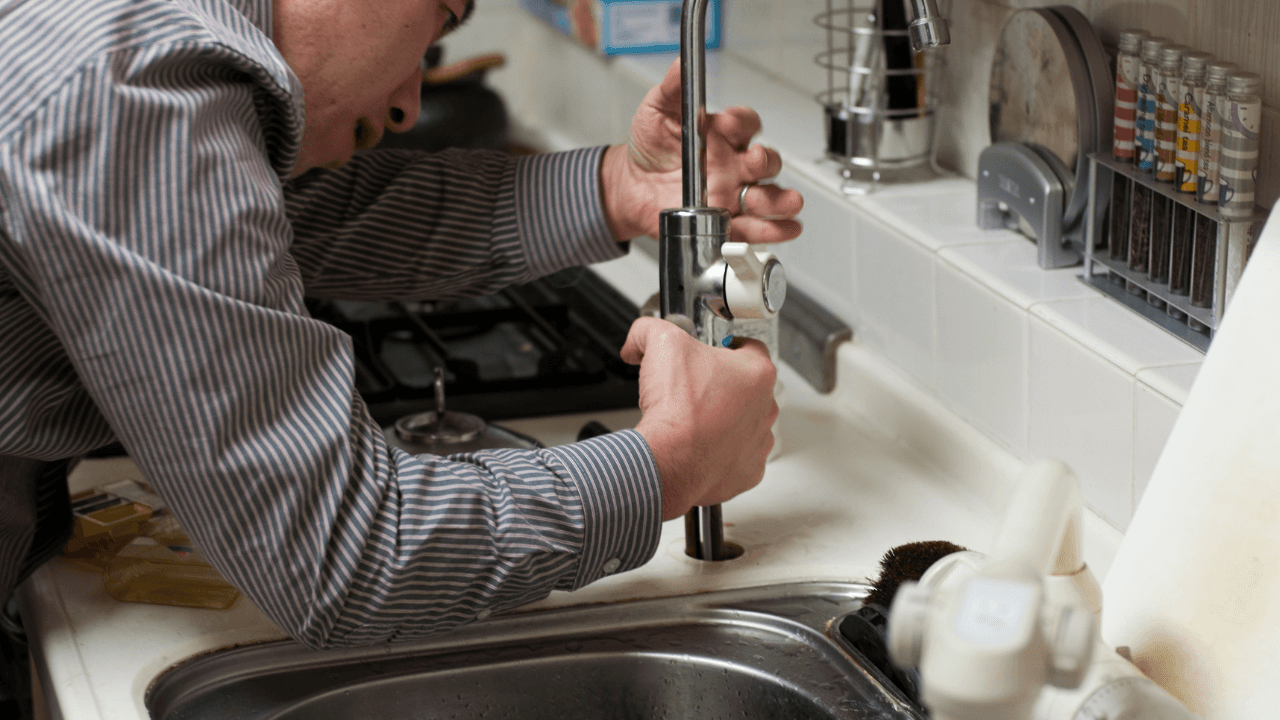How to Start a Home Decor Business Online – A Step-by-Step Guide
How to Start a Home Decor Business Online – A Step-by-Step Guide



Introduction
Introduction
Thinking about starting a home decor business online? You're not alone. More people than ever are shopping for home decor online, skipping brick-and-mortar stores for the convenience of online shopping. This guide walks you through the essentials to get your online home decor business up and running. From finding your niche to setting up your store and crafting top-notch product descriptions, here’s everything you need to know to build a successful home decor brand online.
Thinking about starting a home decor business online? You're not alone. More people than ever are shopping for home decor online, skipping brick-and-mortar stores for the convenience of online shopping. This guide walks you through the essentials to get your online home decor business up and running. From finding your niche to setting up your store and crafting top-notch product descriptions, here’s everything you need to know to build a successful home decor brand online.
Contents
Boost your business visibility to thousands of engaged readers!
Get Featured on 100+ pages across the FounderNoon website.
One month stretch ⇢ $100
Three-month stretch ⇢ $250
Boost your business visibility to thousands of engaged readers!
Get Featured on 100+ pages across the FounderNoon website.
One month stretch ⇢ $100
Three-month stretch ⇢ $250
Contents
Step 1: Find Your Niche in the Home Decor Market
Step 1: Find Your Niche in the Home Decor Market
Choosing the right home decor niche is key. It helps you target a specific type of customer and makes your brand stand out. You might want to focus on a theme like eco-friendly products, minimalist decor, or vintage styles.
Research Popular Home Decor Items: Browse home decor stores and online marketplaces to see what’s trending. Look for products that have a clear demand but aren’t overly competitive. Items like plant holders, wall art, or sustainable furniture could be good choices.
Evaluate Your Competition: Check out other successful home decor retailers in your niche. Look at their product range, website, and social media presence to see what’s working for them. This gives you ideas on how to shape your own brand.
(Search trend of "vintage home decor" - you can clearly see that it's something that most people are willing to buy)
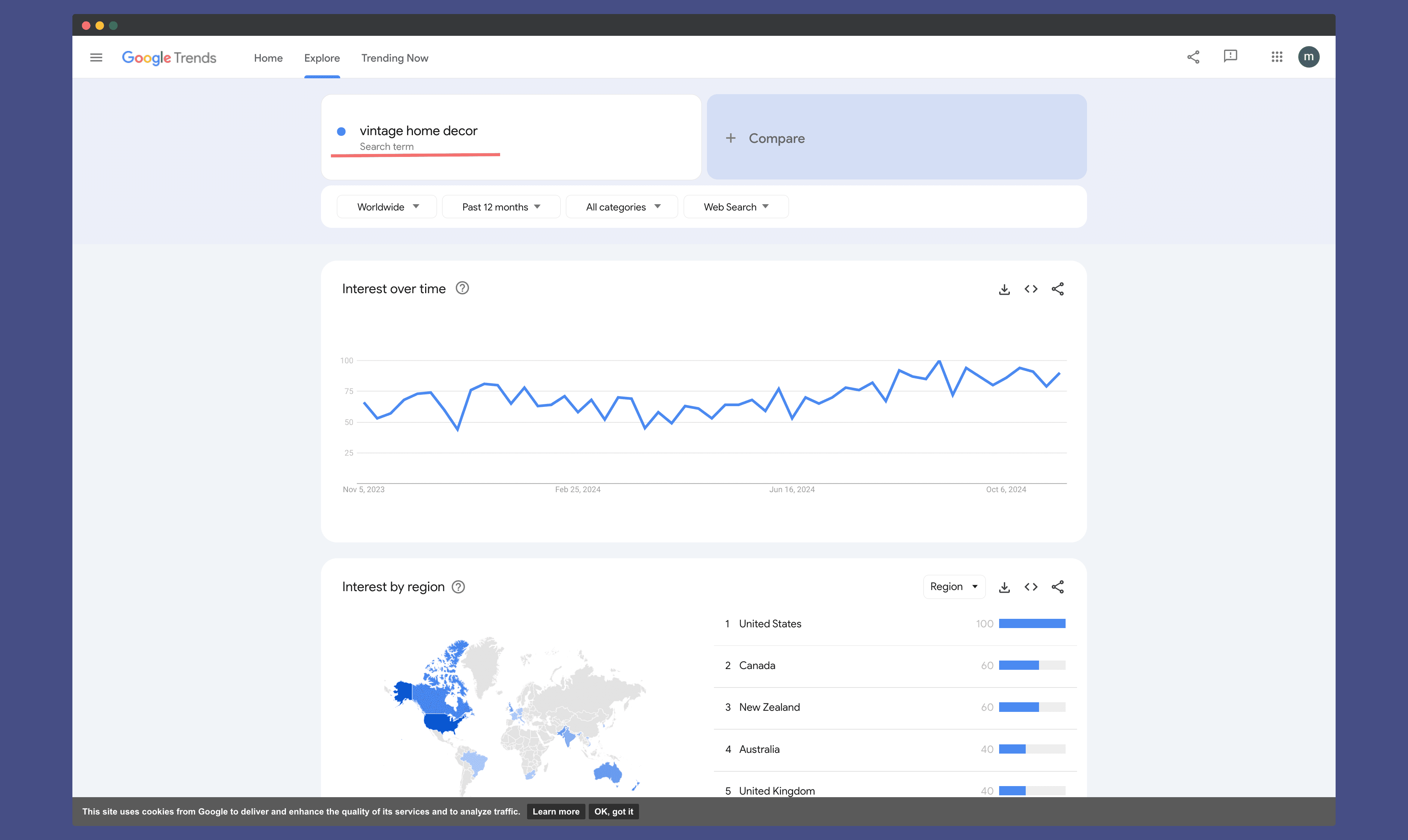
💡Pro tip: Once you choose your niche, stick with it. A focused brand attracts a loyal audience more than a general one.
Choosing the right home decor niche is key. It helps you target a specific type of customer and makes your brand stand out. You might want to focus on a theme like eco-friendly products, minimalist decor, or vintage styles.
Research Popular Home Decor Items: Browse home decor stores and online marketplaces to see what’s trending. Look for products that have a clear demand but aren’t overly competitive. Items like plant holders, wall art, or sustainable furniture could be good choices.
Evaluate Your Competition: Check out other successful home decor retailers in your niche. Look at their product range, website, and social media presence to see what’s working for them. This gives you ideas on how to shape your own brand.
(Search trend of "vintage home decor" - you can clearly see that it's something that most people are willing to buy)

💡Pro tip: Once you choose your niche, stick with it. A focused brand attracts a loyal audience more than a general one.
Step 2: Create a Simple Business Plan
Step 2: Create a Simple Business Plan
A business plan doesn’t have to be complex. Just start by outlining some basic goals, like what products you’ll sell, your target market, and your budget. This helps you stay on track and measure your progress.
Define Your Budget: How much do you need to invest upfront? Factor in costs like website hosting, product sourcing, and marketing.
Identify Potential Challenges: Starting a home decor business has unique challenges, such as finding reliable suppliers and handling shipping logistics for fragile items. Think about how you’ll handle these issues from the start.
A business plan doesn’t have to be complex. Just start by outlining some basic goals, like what products you’ll sell, your target market, and your budget. This helps you stay on track and measure your progress.
Define Your Budget: How much do you need to invest upfront? Factor in costs like website hosting, product sourcing, and marketing.
Identify Potential Challenges: Starting a home decor business has unique challenges, such as finding reliable suppliers and handling shipping logistics for fragile items. Think about how you’ll handle these issues from the start.
Step 3: Find and Source High-Quality Products
Step 3: Find and Source High-Quality Products
Quality is everything in the home decor market. Online shoppers can’t see or touch products, so they rely on your descriptions and photos to judge quality.
Locate Reliable Suppliers: Whether you’re dropshipping or buying wholesale, make sure your suppliers offer durable, high-quality items. Look for reviews and ratings on supplier platforms to avoid unreliable vendors.
Focus on High-Quality Images: Use clear, well-lit photos of each item from different angles. Quality images help your products stand out and increase trust with shoppers.
💡 Pro tip: Order sample products to check their quality before you start selling.
Quality is everything in the home decor market. Online shoppers can’t see or touch products, so they rely on your descriptions and photos to judge quality.
Locate Reliable Suppliers: Whether you’re dropshipping or buying wholesale, make sure your suppliers offer durable, high-quality items. Look for reviews and ratings on supplier platforms to avoid unreliable vendors.
Focus on High-Quality Images: Use clear, well-lit photos of each item from different angles. Quality images help your products stand out and increase trust with shoppers.
💡 Pro tip: Order sample products to check their quality before you start selling.
Step 4: Set Up Your Online Store
Step 4: Set Up Your Online Store
You’ll need an online store to sell home decor. Many entrepreneurs use platforms like Shopify, WooCommerce, or Etsy, which make it easy to set up a store without technical skills.
Choosing a Platform
Shopify: Great for beginners, with customizable templates and built-in tools for e-commerce.
WooCommerce: A good option if you already have a WordPress site. It offers flexibility but may require some setup.
Etsy: Best if you’re selling handcrafted or vintage items. It has a built-in audience of shoppers looking for unique home decor.
Designing Your Store
Your store should be simple and easy to navigate. Use a clean layout, and make sure product categories (like wall art, furniture, lighting) are clear. A well-organized store keeps shoppers engaged and improves the chances of a sale.
(See example below)
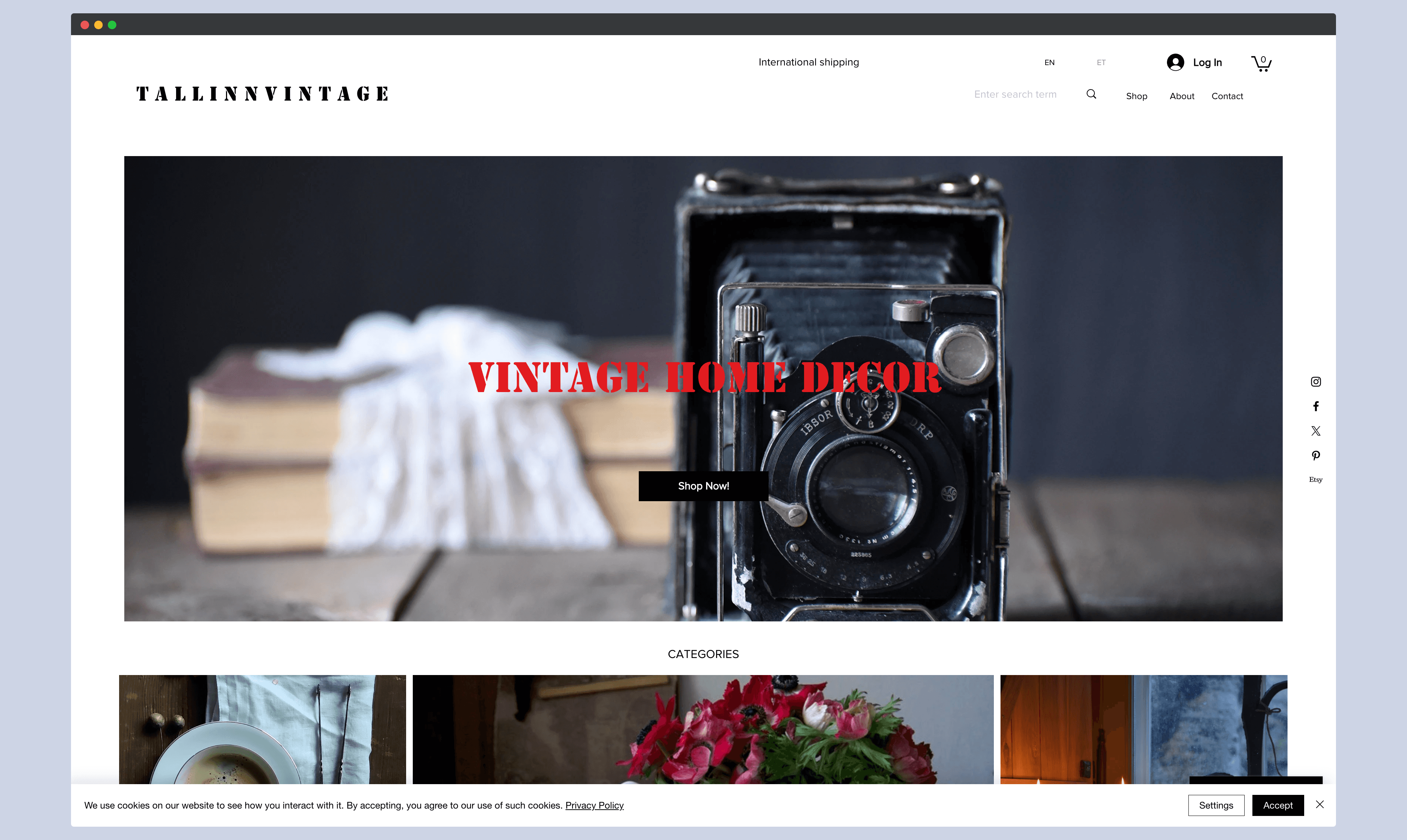
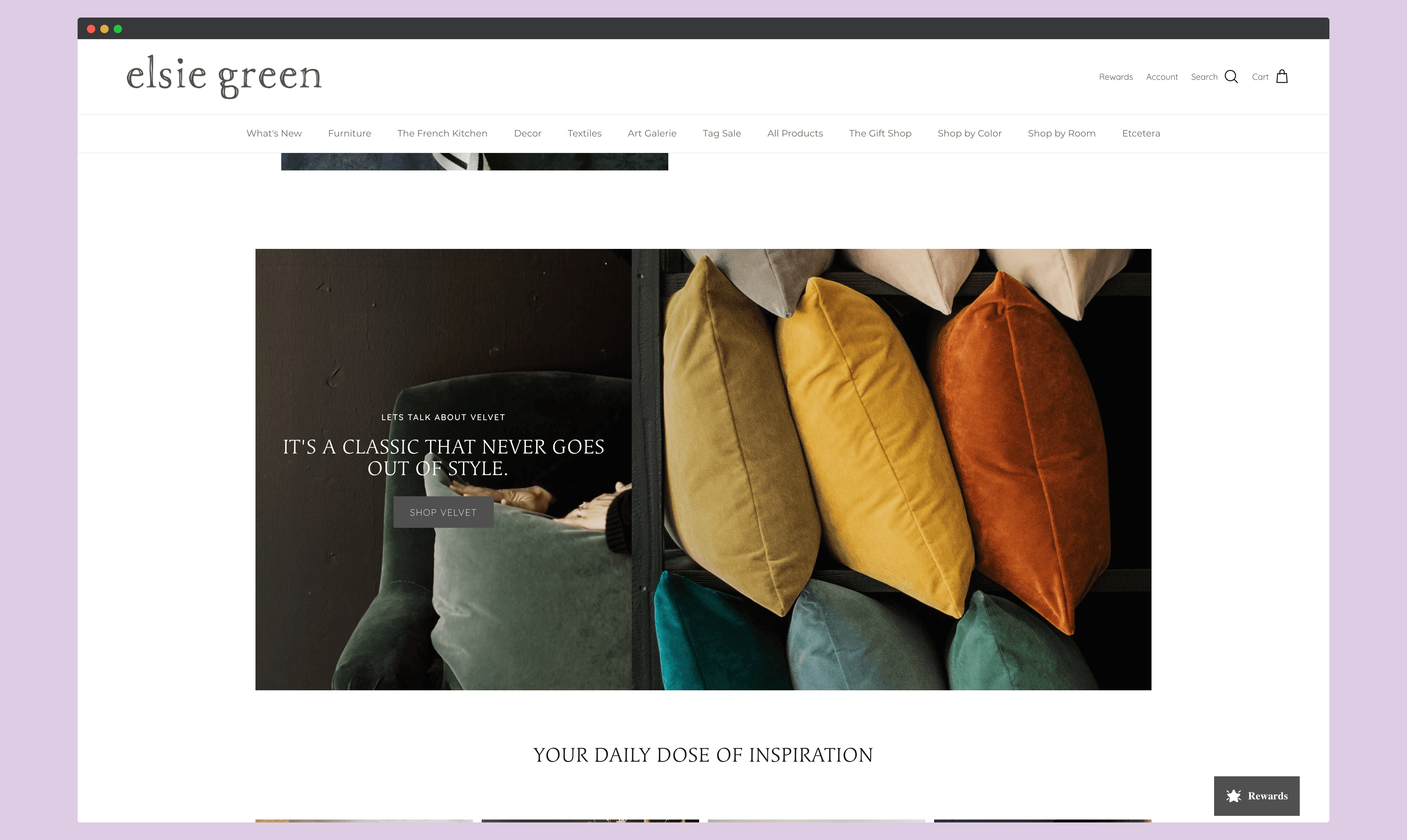
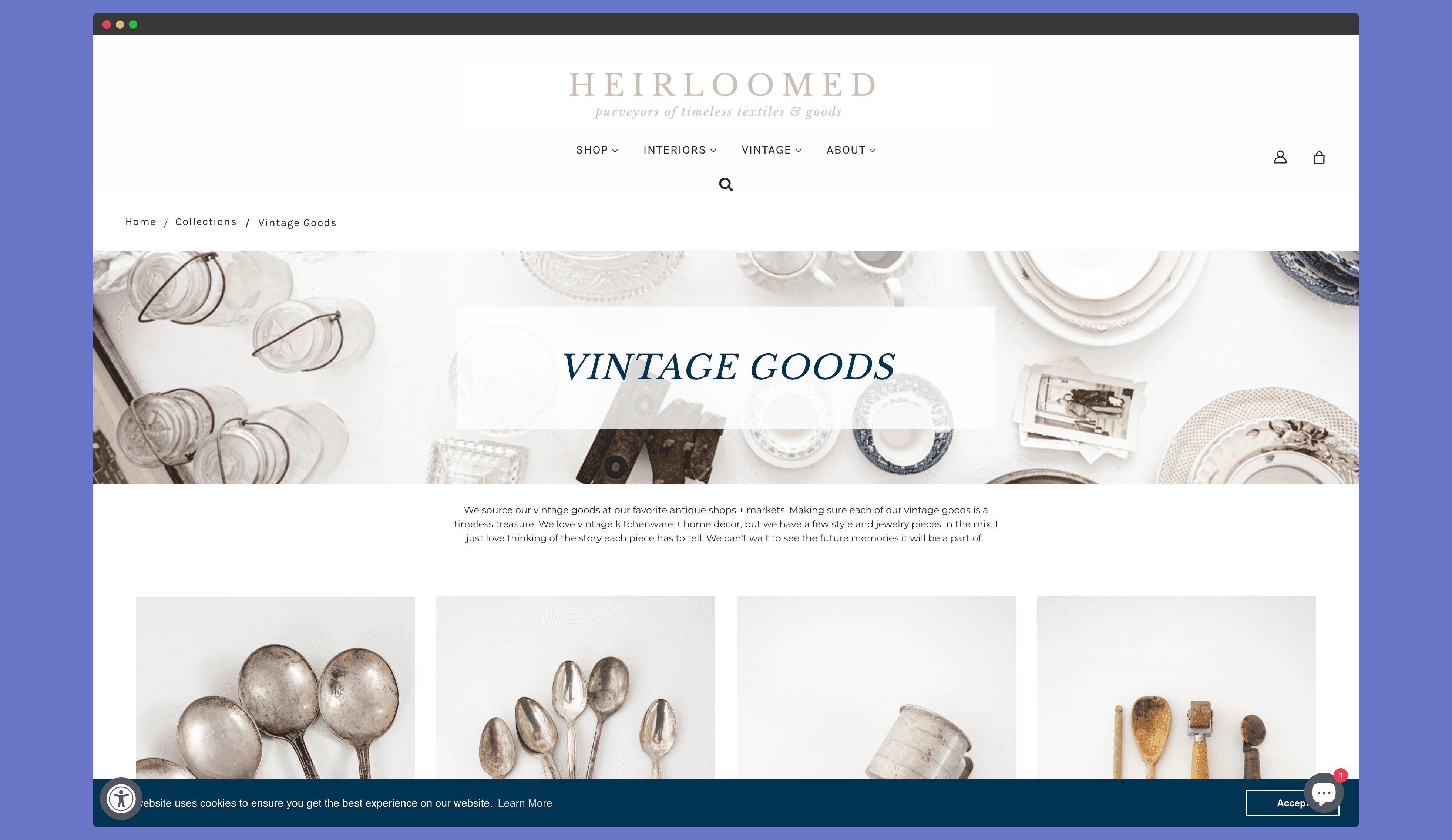
You’ll need an online store to sell home decor. Many entrepreneurs use platforms like Shopify, WooCommerce, or Etsy, which make it easy to set up a store without technical skills.
Choosing a Platform
Shopify: Great for beginners, with customizable templates and built-in tools for e-commerce.
WooCommerce: A good option if you already have a WordPress site. It offers flexibility but may require some setup.
Etsy: Best if you’re selling handcrafted or vintage items. It has a built-in audience of shoppers looking for unique home decor.
Designing Your Store
Your store should be simple and easy to navigate. Use a clean layout, and make sure product categories (like wall art, furniture, lighting) are clear. A well-organized store keeps shoppers engaged and improves the chances of a sale.
(See example below)




















2,678+ people enjoy it
➤ Every week, we dig up stories of how regular people started and grew their businesses—
➤ Plus the marketing hacks that won them customers.
➤ Then, we share those insights with you.
➤ Every week, we dig up stories of how regular people started and grew their businesses—
➤ Plus the marketing hacks that won them customers.
➤ Then, we share those insights with you.
Step 5: Write Engaging Product Descriptions
Step 5: Write Engaging Product Descriptions
Good product descriptions help sell your items. They tell shoppers what the product is, why it’s unique, and how it will look in their space.
Describe the Details: Include dimensions, materials, and colors. Mention if the item is eco-friendly, handcrafted, or unique in any way.
Paint a Picture: Help shoppers imagine the item in their home. For example, instead of “wall art,” say, “A vibrant, eye-catching painting that brightens up any living room.”
Example Description:
"Bring warmth to your living space with this handmade wooden coffee table, crafted from sustainable oak. Perfect for modern or rustic interiors, this table adds charm and function to any room."
Good product descriptions help sell your items. They tell shoppers what the product is, why it’s unique, and how it will look in their space.
Describe the Details: Include dimensions, materials, and colors. Mention if the item is eco-friendly, handcrafted, or unique in any way.
Paint a Picture: Help shoppers imagine the item in their home. For example, instead of “wall art,” say, “A vibrant, eye-catching painting that brightens up any living room.”
Example Description:
"Bring warmth to your living space with this handmade wooden coffee table, crafted from sustainable oak. Perfect for modern or rustic interiors, this table adds charm and function to any room."
Step 6: Build a Strong Brand and Online Presence
Step 6: Build a Strong Brand and Online Presence
Creating a brand isn’t just about a logo. It’s about how you present your products, your website’s look, and how you connect with customers.
Choose a Brand Identity
Think about your brand’s “vibe.” Are you aiming for luxury, minimalism, or something in between?
Pick brand colors and fonts that match your niche. For example, natural tones work well for eco-friendly brands, while sleek blacks and whites suit modern decor.
Use Social Media Platforms
Social media is a powerful tool for promoting your products. Platforms like Instagram and Pinterest are especially useful for home decor businesses because they’re visual and attract people interested in design.
Instagram: Post high-quality images of your products and styled home decor scenes.
Pinterest: Share boards with your items in different decor themes to attract people searching for home decor ideas.
💡 Pro tip: Consistent branding across your website and social media builds trust and recognition with potential customers.
Creating a brand isn’t just about a logo. It’s about how you present your products, your website’s look, and how you connect with customers.
Choose a Brand Identity
Think about your brand’s “vibe.” Are you aiming for luxury, minimalism, or something in between?
Pick brand colors and fonts that match your niche. For example, natural tones work well for eco-friendly brands, while sleek blacks and whites suit modern decor.
Use Social Media Platforms
Social media is a powerful tool for promoting your products. Platforms like Instagram and Pinterest are especially useful for home decor businesses because they’re visual and attract people interested in design.
Instagram: Post high-quality images of your products and styled home decor scenes.
Pinterest: Share boards with your items in different decor themes to attract people searching for home decor ideas.
💡 Pro tip: Consistent branding across your website and social media builds trust and recognition with potential customers.
Step 7: Market Your Home Decor Store
Step 7: Market Your Home Decor Store
Marketing helps you get the word out. Focus on a few key strategies to start, and adjust as you see what works best.
Basic Marketing Channels
SEO: Use keywords like “home decor items,” and “interior designing" in your product descriptions, titles, and blog posts.
Email Marketing: Build a list of interested customers and send them regular updates about new products or sales.
PPC Advertising: If you have the budget, consider pay-per-click ads on Google or social media. They can quickly bring in traffic.
Partner with Influencers
Consider working with influencers in the home decor niche. They can introduce your products to a larger audience and help build your brand’s credibility.
Marketing helps you get the word out. Focus on a few key strategies to start, and adjust as you see what works best.
Basic Marketing Channels
SEO: Use keywords like “home decor items,” and “interior designing" in your product descriptions, titles, and blog posts.
Email Marketing: Build a list of interested customers and send them regular updates about new products or sales.
PPC Advertising: If you have the budget, consider pay-per-click ads on Google or social media. They can quickly bring in traffic.
Partner with Influencers
Consider working with influencers in the home decor niche. They can introduce your products to a larger audience and help build your brand’s credibility.
Step 8: Prioritize Customer Service
Step 8: Prioritize Customer Service
Good customer service goes a long way in building a successful online business. Respond quickly to inquiries, handle returns smoothly, and make your policies clear on your website.
Offer Live Chat: Consider adding a live chat option to your store. It helps answer customer questions instantly and can increase conversions.
Encourage Reviews: Positive reviews boost credibility and encourage others to buy. Make it easy for customers to leave feedback after their purchase.
Good customer service goes a long way in building a successful online business. Respond quickly to inquiries, handle returns smoothly, and make your policies clear on your website.
Offer Live Chat: Consider adding a live chat option to your store. It helps answer customer questions instantly and can increase conversions.
Encourage Reviews: Positive reviews boost credibility and encourage others to buy. Make it easy for customers to leave feedback after their purchase.
Step 9: Analyze and Improve
Step 9: Analyze and Improve
Once your store is running, use data to understand what’s working and what needs improvement.
Track Website Traffic: Use tools like Google Analytics to see which pages get the most views and which products are most popular.
Adjust Your Strategy: If certain products aren’t selling, consider updating their descriptions or promoting them on social media. Experiment until you find what works best.
💡 Pro tip: Regularly updating your store with new products and content keeps shoppers coming back.
Once your store is running, use data to understand what’s working and what needs improvement.
Track Website Traffic: Use tools like Google Analytics to see which pages get the most views and which products are most popular.
Adjust Your Strategy: If certain products aren’t selling, consider updating their descriptions or promoting them on social media. Experiment until you find what works best.
💡 Pro tip: Regularly updating your store with new products and content keeps shoppers coming back.
Step 10: Tackle Common Challenges in the Home Decor Business
Step 10: Tackle Common Challenges in the Home Decor Business
Starting a home decor business online has its challenges. Here are a few and how to handle them:
Shipping Fragile Items: Home decor items are often delicate. Use strong packaging and add shipping insurance to avoid losses.
High Competition: Many stores sell home decor online. Differentiate by focusing on unique items or a specific niche, and keep your brand voice consistent.
Managing Inventory: Stock levels can be tricky, especially when products sell faster than expected. Use inventory management software to keep track.
Starting a home decor business online has its challenges. Here are a few and how to handle them:
Shipping Fragile Items: Home decor items are often delicate. Use strong packaging and add shipping insurance to avoid losses.
High Competition: Many stores sell home decor online. Differentiate by focusing on unique items or a specific niche, and keep your brand voice consistent.
Managing Inventory: Stock levels can be tricky, especially when products sell faster than expected. Use inventory management software to keep track.
Conclusion
Conclusion
Starting an online home decor business takes planning, creativity, and persistence. By following these steps, you can create a brand that stands out, attracts the right audience, and grows over time. From choosing a niche to crafting product descriptions and building an online presence, you’re ready to launch a successful home decor brand online.
Do me a favor and pass this on to a pal or share? It'll take just 20 seconds—this one took me about 8 hours to research and write 🫠
P.S. I’ve got a weekly newsletter where I share stories about founders who have started successful online businesses, growth strategies, and tips to start/grow your own business. I would love for you to join here
Starting an online home decor business takes planning, creativity, and persistence. By following these steps, you can create a brand that stands out, attracts the right audience, and grows over time. From choosing a niche to crafting product descriptions and building an online presence, you’re ready to launch a successful home decor brand online.
Do me a favor and pass this on to a pal or share? It'll take just 20 seconds—this one took me about 8 hours to research and write 🫠
P.S. I’ve got a weekly newsletter where I share stories about founders who have started successful online businesses, growth strategies, and tips to start/grow your own business. I would love for you to join here






